These Kerala symbols propelling Kerala culture and tradition are known by their place name
For its unique specialties and qualities, certain products of Kerala are famous worldwide. They are true identities of Kerala culture and tradition, and centuries old without any change. In fact certain localities of Kerala are identified by these distinct symbols; for example, Aranmula Kannadi (Aranmula Metal Mirror) and Kozhikode Halwa. Yes, they are identified by their place name too, the region where a particular item originated. These symbols are closely linked to Kerala culture and tradition, and their popularity is spread across the boundaries. Through this column, I shall introduce to you a few such traditional items whose name which includes its region together forms a brand.
1. Aranmula Kannadi – This metallic mirror is made from an alloy of tin and copper (Chempu-Velutheeyam). This handmade metal alloy mirror is made in Aranmula Heritage Village of Kerala and hence known by the name Aranmula Kannadi. Its mixing proportion is a family secret, known to only four families of Aranmula. Its secret is passed over from generation to generation since 16th century and is regarded a traditional process. As this method is entirely different from normal “silvered” glass mirrors, Aranmula Kannadi received fame worldwide. It’s a tedious process too, and requires polishing for many days to get the mirror reflection. Now only a few people know the family secret behind this mysterious mirror.

Aranmula Kannadi is very much linked to Kerala culture and tradition, and included as one among the 8 sacred things of Ashtamangalyam. The mirror is believed to bring good luck and prosperity to those who possess it. The mirror reflects a glorious past and is very costly indeed. Unlike normal mirrors, Aranmula mirrors reflect the real picture with clarity, and there is no gap between the object and the image. But this age-old craft is getting threatened by duplicates in the market. The mirror is also certified with the prestigious GI tag in 2004-05.
2. Payyannur Pavithra Mothiram – This ring belongs to Payyannur of Kannur district, and is made observing vrita and doing certain rituals. As per beliefs, if this ring is worn on the ring finger of right hand with belief and purity of soul, it gives prosperity in return. In Aitheehyamala written by Shankunni, it’s described that Udaya Varma Raja of Kadathanadu has made a pavithra ring during Malayalam calendar year 1076. This ring was traditionally made of Dharba grass, and worn during the rituals of Pithru bali.
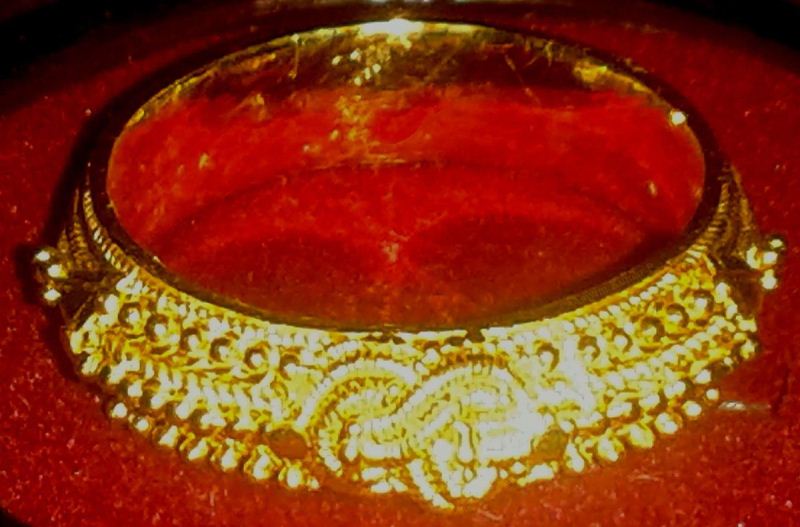
3. Metal Mirrors of Adakkaputhur – Adakkaputhur Loha Kannadi hails from Adakka Puthoor of Palakkad district. Similar to Aramula mirror, this metal mirror also has a secret behind its proportion of alloys. It’s equally good in quality with distinct design too. These craftsmen hail from a community known as ‘Moosari’, and only a few people are associated with traditional making of Adakkaputhur mirror.
4. Kasargod Sari – This hand-woven sari includes the natural beauty of Thulunad and Yakshagana dance form. Colours used for the pillar crafts of Madhur Madanantheshwara Siddhi Vinayaka Temple are also adopted for the design of this sari. Borders and Pallus of Kasargod sarees are attractive and often designed using jacquard and dobi. Saris will be available in more than 25 colours, and its average cost in more or less 1000 rupees.
5. Kozhikode Halwa – This halwa is quite common during festival seasons and bakeries. This world famous halwa is prepared using coconut oil and ghee and Europeans have nicknamed it as ‘Sweet meat’. Mittai Theruvu of Kozhikode is quite famous for Kozhikode halwa where it’s made in large scale and sold. So this street is also known as ‘Sweet Meat Street’ during colonial rule. This exotic sweet is a trademark dish of Kozhikode, and the most popular among Kerala desserts. Made of different variants like pine apple, jackfruit, dates, banana etc, black halwa made using rice is most popular.
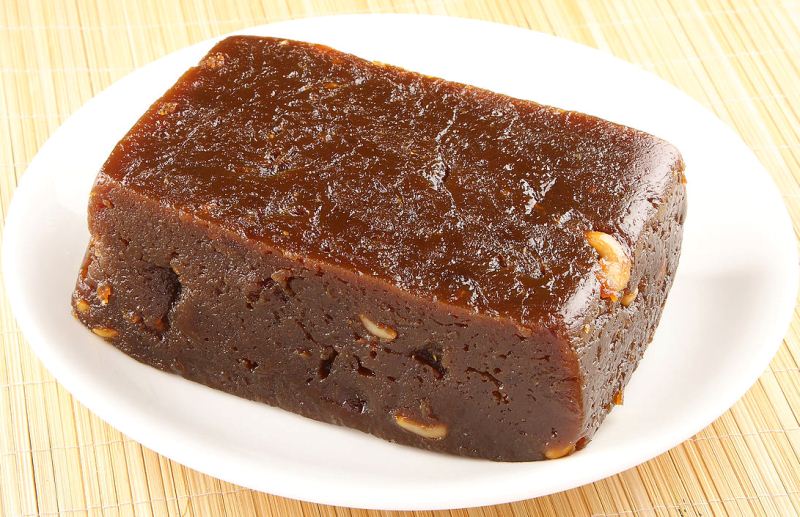
6. Kuttiattoor Mango – A variant of Malgova mango, it’s quite popular due to its taste and structural beauty. This rare variety and sweet smelling mango is mainly cultivated in Kuttiattoor village of Kannur district and hence known by this name. Locals call it the ‘Nambiar mango’. As per legend, the region has a good population belonging to Nambiar community, and a Nambiar farmer who used to carry mangoes to the marketplace in nearby Irikkoor. Muslim merchants started referring to this mango as Nambiar mango, and still known the same in the locality. Also read: 100 varieties of local mangoes of Kerala.
7. Wayanad Turmeric – Wayanadan Manjal in local language, this turmeric cultivated in the mineral rich soil of Wyanad is famous for its colour and quality. If it is cut into pieces, it has attractive colour. One saying goes like this, ‘Wayanadan Manjal murinja pole….’
8. Vechoor Cattle – Vechoor cattle is a rare breed which exclusively belongs to Kerala. Guinness Book of Records has recorded its name as the smallest cattle breed in the world. This breed was first found in Vechoor of Kottayam, and hence known by the name. It produces more quantity of milk comparing to the food intake and its milk is known to have medicinal value.

9. Palakkadan Matta Rice – This brown rice is round in shape and indeed popular across the state. This species is widely cultivated in paddy fields of Palakkad region.
10. Ramassery Idli – This idli belongs to Ramassery locality of Palakkad district. It’s prepared in earthen pots using firewood of tamarind tree. A vanishing tradition, this idli is available in many restaurants of Palakkad.
11. Beypore Uru – Beypore of Kozhikode district is quite famous for the construction of flat boats known as Uru. Uru is exported to different parts of the world from Beypore. It’s indeed centuries old and its popularity is far spread.
12. Aranmula Vallasadya – It’s an annual celebration associated with Aranmula Parthasarathy temple of Pathanamthitta district. It’s associated with several traditions and customs, lasts for 60 days. This specially prepared meal is served to oarsman of a snake boat race conducted in the Pampa River, and there may be up to 15 Valla sadyas on any given day. The Valla Sadhya is conducted on Sree Krishna Jayanti day. The dishes are prepared by devotees as an offering to Lord Krishna.
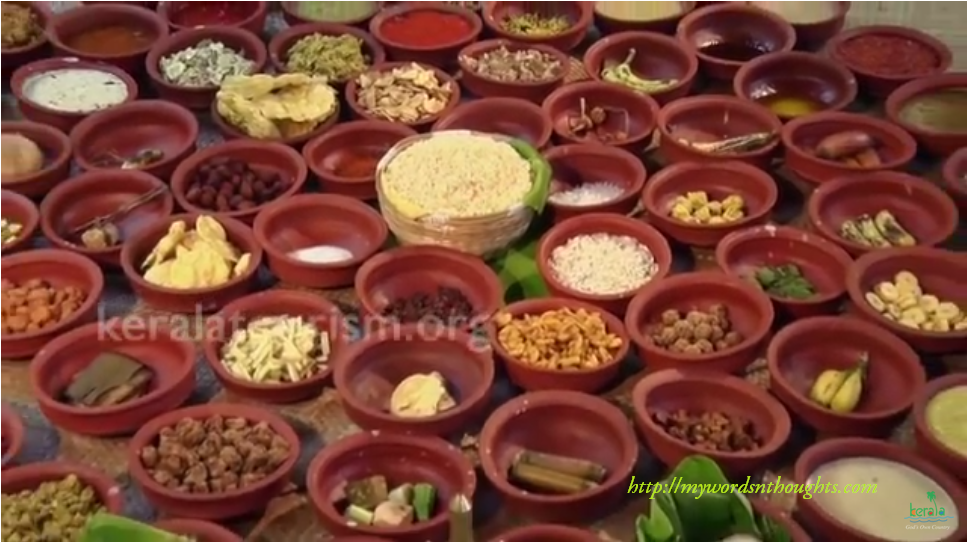
Youtube Screenshot
For each day there will be around 63 dishes and you can watch people singing Vanchipattu in rhythm while having the meal. If they want any dish to be served second, it will be ordered singing in Vanchipattu rhythm. The royal vegetarian meal consisting of around 70 dishes make it indeed special. Definitely it’s the largest vegetarian meal of India.
13. Malappuram dagger – Malappuram Kathi in Malayalam language, is a dagger with some distinct characteristics. Its mouth end is thick and sharp. Also it has a very light-weight holder made of deer antler. The holder can be separated from the knife, and is very beautifully crafted. It was developed by few blacksmith families of Malappuram district of Malabar region of Kerala, and hence this name. The dagger is 18–25 inches, and as per legends, wounds made by Malappuram Kathi are difficult to heal, they sustain for a long time and infections may develop. The secret of its metallic combination is still unknown to the outer world. Only a few blacksmith families know it, and they pass the secret to the next generation. Malappuram dagger has been specified in many historic books related to Kerala culture.
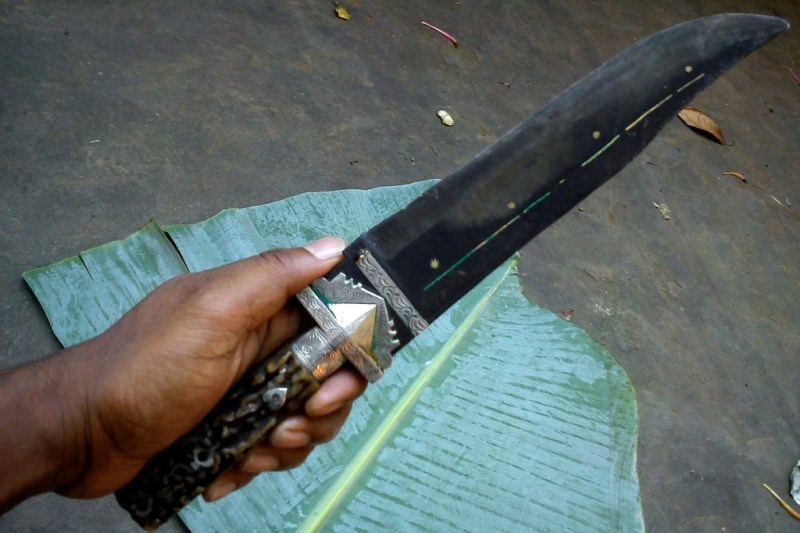
14. Ambalapuzha Payasam – Ambalapuzha Sree Krishna temple is indeed very famous; the temple where Kunjan Nambiar presented Ottan Thullal for the first time. The temple is also famous for the Paal Payasam – a sweet Kheer dish made using milk and rice, a nivedyam given to devotees. This payasam is indeed famous among Hindu devotees. As per belief, Lord Krishna visits temple every day at the time of Palpayasa Nivedyam and tastes it.
15. Kottarakara Unniyappam – Kottarakara Unniyappam of the famous Ganapathi temple is equally famous as Ambalapuzha Paal Paayasam. Once you got its taste, you will definitely feel like having one more. It’s a secret carried forward traditionally and they are willing to disclose only its ingredients, but not the quantity. Rice powder, cardamom, palayankodan banana, jaggery, molasses and dry ginger are the main ingredients. However the measurements are still unknown to outer world, still kept as a secret.
Though Unniyappam of present times is not tasty as earlier, due to the extra use of molasses, its popularity has only grown manifold in the recent times. Deep fried in coconut oil, sprinkling sugar as the final touch makes Kottarakara Unniyappam unique. The process is tedious too, cooking 288 appams a time in eight Karas having 36 cavities. Devotees believe that it’s the grace of Lord Ganesha which makes this Unniyappam tastier. It’s said that when Perunthachan installed this temple centuries back, the first offerings he gave was Unniyappam, and since then it because a part of every auspicious occasion celebrated in the temple.
16. Balaramapuram Handloom – Saris, Dhotis and Set saris, if you want Kerala’s traditional off-white dress, Balaramapuram Handloom is the best choice. Balaramapuram is a small town of Thiruvananthapuram district, on way to Tamil Nadu and there are many families fully involved in this tradition. The tradition is handed over to the next generation. They are Tamil speaking people and belong to Shaliyar community. They are settled in the streets of Balaramapuram.
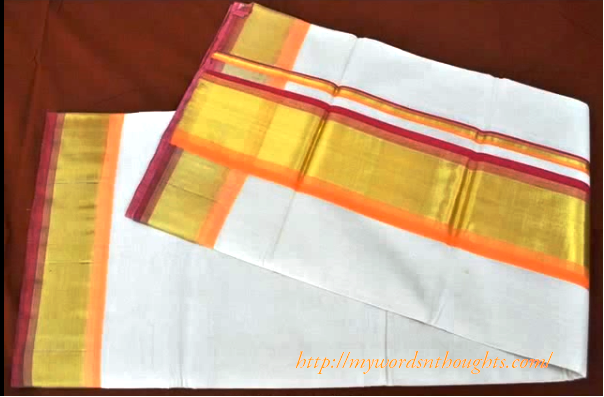
They weave dress using cotton threads and silk threads applied with gold to give a distinct look to handloom dress wear. They also incorporate several decorations and designs, strictly as handwork which makes this traditional handloom item very popular. The handloom weaving was first introduced at Balaramapuram during the reign of Maharaja Balaramavarma around 1800 and thus holds two century old tradition. The town is also named after him.
17. Elavancheri Koduvaal – Elavancheri is a place belonging to Palakkad district and this place got noticed for Koduval (a type of knife with flat structure, similar to a sword) made in this region.
18. Panniyoor Pepper – It’s a distinct and popular variety of pepper cultivated in Panniyoor of Kannur district. It gives good yield and of high quality, that makes it indeed popular. Its stalk is thick and lengthy too.
19. Vadakara Murukk & Karipode Murukk – Murukk of Vadakara made using rice is indeed famous. This murukk is not so hard, and even kids can eat them easily. Karipode Murukk is yet another variety which uses rice powder, black sesame seeds and salt as main ingredients. This murukk is prepared in Karipode of Palakkad district and hence known by the name. This murukk is shaped manually using hands before frying and stay fresh for about 1 month without any damage.
Images courtesy: Wikipedia


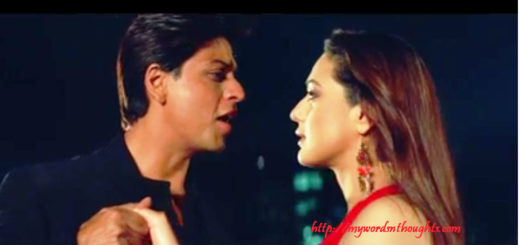
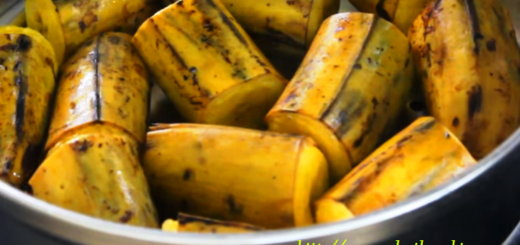










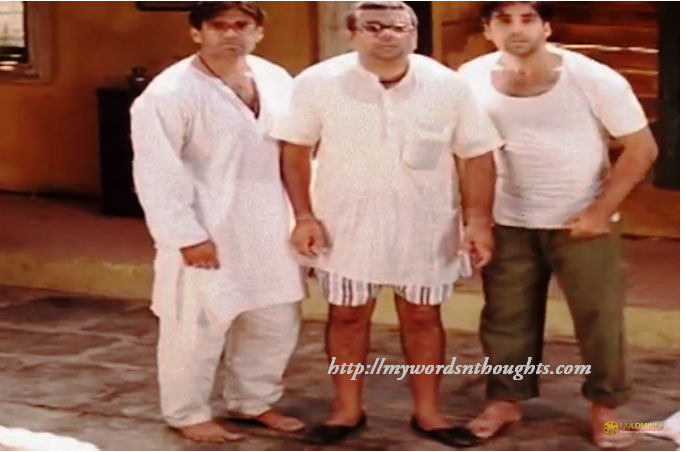
Recent Comments